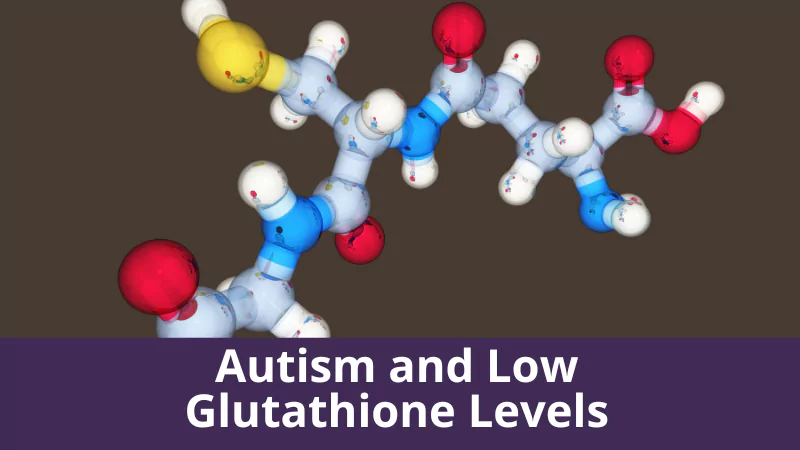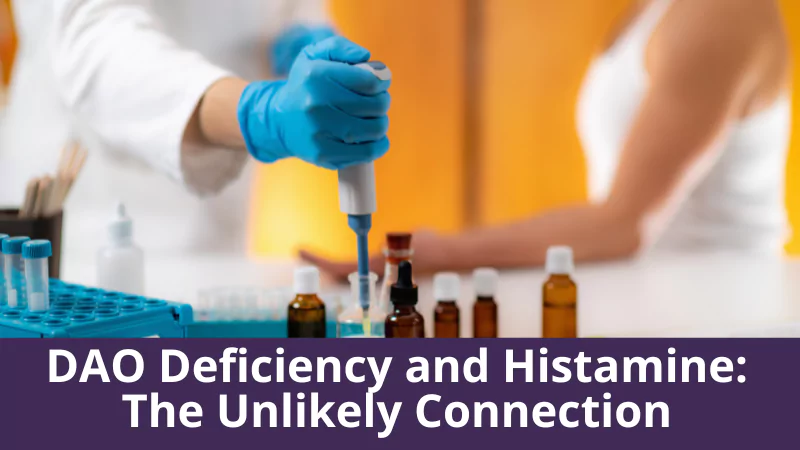The role of glutathione
Even though involvement of genetic abnormalities in autism spectrum disorders (ASD) is well-accepted, recent studies point to an equal contribution by environmental factors, particularly environmental toxicants.
Glutathione in autism has become the topic of great interest as the scientists explore the theory that autism may be triggered by exposure to heavy metals, pesticides and other environmental toxins, coupled with a weak immune system and nutrient deficiencies in both mothers and children during fetal development and early life.
Detoxification, methylation and anti-oxidants continue to play an important role in the biomedical treatment of autism and other chronic medical conditions.
A main player in this is glutathione. Although it is critical for maintaining good health, it is not considered an “essential protein” since the human body can make it, as opposed to needing to get it through the diet.
Glutathione
- Glutathione is technically a tripeptide, which is a small protein, made up of only three amino acids (glutamine, glycine and cysteine). It is present naturally in every cell of the body, as well as in the blood, the bile and the fluid lining the lungs.
- The liver is normally the main producer of glutathione which plays many important roles in the body. Probably the best known is its protection against oxidative stress produced by oxidizing free radicals and other reactive oxygen species, its support for the immune system, and its role in removing a variety of toxic substances from the body.
- Glutathione is the most powerful antioxidant in the body. One of its key functions is to reduce oxidative stress and remove toxins. If you don’t have enough, bad things start to happen, such as oxidative brain damage.
- It can be present in two forms, a reduced (GSH) or oxidized (GSSG) form, which help it neutralize dangerous free radicals present in the body. The glutathione redox ratio (GSH: GSSG) is an indicator of overall glutathione status and intracellular reducing environment.
- Glutathione protects cells in several ways.
- It neutralizes oxygen molecules before they can harm cells.
- Together with selenium, it forms the enzyme glutathione peroxidase, which neutralizes hydrogen peroxide. It is also a component of another antioxidant enzyme, glutathione-S-transferase, which is a broad-spectrum liver-detoxifying enzyme.
- Glutathione protects not only individual cells but also the tissues of the arteries, brain, heart, immune cells, kidneys, lenses of the eyes, liver, lungs, and skin against oxidant damage.
- It plays a role in preventing cancer, especially liver cancer, and may also have an anti-aging effect.
- Most glutathione is found in the liver where it detoxifies many harmful compounds to be excreted through the bile. Some glutathione is released directly by the liver into the bloodstream where it helps to maintain the strength of red blood cells and also protects white blood cells.
The Methylation Cycle and the Production of Glutathione
Is there an MTHFR and glutathione connection?
MTHFR, or the methylenetetrahydrofolate reductase is the key regulatory enzyme in folate and homocysteine metabolism. Therefore every alteration in its structure or function affects enormously our health. Even more, because of its direct connection to glutathione production.
- One of the most important processes of the methylation cycle is the production of glutathione (GSH). If its production is inhibited or limited, as it is with several types of genetic “glitches” then dysfunction and disease result.
- Methyl cycle defects (and low glutathione) leave you sensitive to environmental toxins, compromise your defense against microbial infection, and complicate proper reading of your remaining genes. Methyl cycle dysfunction explains why one individual is damaged by environmental toxins, while others living in the same environment are unaffected.
- People with MTHFR mutations almost always have low glutathione levels, making them more susceptible to stress and oxidative stress while making them far less tolerant to toxins. This gets much worse with age, as the accumulation of toxins and cumulative damage of oxidative stress take their toll on the body.
When someone has an MTHFR mutation it handicaps the efficiency of the methylation cycle by up to 90%.
- The methylation cycle is tied directly to our serotonin and dopamine levels, along with our homocysteine and glutathione levels.
New research is beginning to show that toxins and oxidative stress contribute to autism. These toxins and oxidative stress damage brain cells and upset the delicate balance of neurotransmitters in the brain, which can cause neurological damage, and in extreme cases, autism.
Glutathione and ASD
There are numerous studies that register suboptimal levels of glutathione in autism. As of March 2016 there are 139 studies on PubMed that investigate glutathione levels, and antioxidant and detoxification activity in autism.
- A large-scale review published in the journal of Nutrition & Metabolism looked for possible mechanisms by which glutathione levels could affect autism risk. They found that reduced glutathione synthesis could easily be a key contributor to autism. This theory has sparked a new field of research focused on optimizing glutathione levels as a way to treat autism.
- Children with autism have low levels of glutathione, and often have impaired glutathione detox pathways. The causes of this are many including increased mercury levels in the environment, bad gut bacteria, and poor diet can all decrease glutathione levels. However, knowing this also lets you attack the problem.
Could increasing the glutathione levels decrease the symptoms of autism?
If children with autism have low levels of glutathione, could increasing their glutathione levels decrease their symptoms of autism?
- Researchers from Stanford University tested the effects of N-acetyl cysteine supplementation on autism symptoms in children.
N-acetyl cysteine (NAC) is a precursor to glutathione that increases the body’s production of this vital antioxidant. NAC may also reduce the formation of glutamate, an excitatory neurotransmitter that kills brain cells in excess.
At the end of the trial, the kids who consumed NAC had a reduction in irritability scores by 80% with minimal side effects.
Conclusion
The connection between genetic variants – SNPs and diseases has revealed the importance of a metabolic pathway in the body that is critical to maintaining health, which is the methylation cycle. The methylation cycle, it turns out, is involved in many regulatory processes and genetic defects that can be particularly damaging.
Autism, neurodevelopmental disorder is one of the genetic defects that can occur, together with other important factors.
An increased vulnerability to oxidative stress and a decreased capacity for methylation may contribute to the development and clinical manifestation of autism.
References
- D. A. Rossignol, S. J. Genuis, and R. E. Frye. Environmental toxicants and autism spectrum disorders: a systematic review Transl Psychiatry. 2014 Feb; 4(2): e360. doi: 10.1038/tp.2014.4 PMCID: PMC3944636
- Dr. David Berger, Pediatrician and TACA Physician Advisory Board member. Detoxification & Methylation important information for individuals on the Autism Spectrum
- Dr. J Dunn. Methylation Cycle Defects. Genetic Variants and Methylation Dysfunction
- S. Jill James, Paul Cutler, Stepan Melnyk, Stefanie Jernigan, Laurette Janak, David W Gaylor, and
- James A Neubrander. Metabolic biomarkers of increased oxidative stress and impaired methylation capacity in children with autism Am J Clin Nutr December 2004 vol. 80 no. 6 1611-1617
- Daniel Leclerc, Sahar Sibani, and Rima Rozen. Molecular Biology of Methylenetetrahydrofolate Reductase (MTHFR) and Overview of Mutations/Polymorphisms Austin (TX): Landes Bioscience; 2000-2013
- MTHFR and Autism http://glutathionepro.com/mthfr-autism/
- Antonio Y. Hardan, M.D., Lawrence K. Fung, M.D., Ph.D., Robin A. Libove, B.S., Tetyana V. Obukhanych, Ph.D., Surekha Nair, M.D., Leonore A. Herzenberg, Ph.D., Thomas W. Frazier, Ph.D., and Rabindra Tirouvanziam, Ph.D. A Randomized Controlled Pilot Trial of Oral N-Acetylcysteine in Children with Autism Biol Psychiatry. 2012 Jun 1; 71(11): 956 – 961. doi: 10.1016/j.biopsych.2012.01.014.
- Penelope AE Main, Manya T Angley, Catherine E O’Doherty, Philip Thomas and Michael Fenech. The potential role of the antioxidant and detoxification properties of glutathione in autism spectrum disorders: a systematic review and meta-analysis Nutrition & Metabolism20129:35 DOI: 10.1186/1743-7075-9-35©








